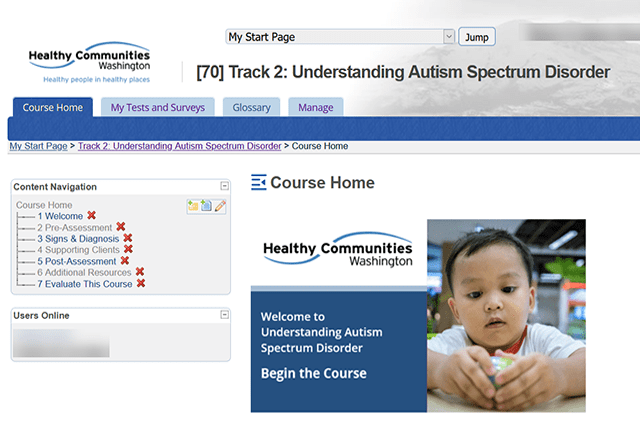The term “online course” is a slippery one. What one person defines as an online course might be vastly different from the way the distance learning industry defines it.
In this time of virtual meetings and remote training, and if you’re looking to start an elearning program, it’s easy to see where the confusion happens. Slideshow presentations, such as PowerPoint, are handy tools for supporting training, especially when someone is in front of an audience using their voice and body language to teach.
But they’re not enough to be a full online course.
Here’s a look at why a slide presentation is not the equivalent of an online course.
Slide presentations lack instruction.
As soon as you take the presenter away from the slide, you’re not left with much. Think about presentations that are heavy on visuals — there are no verbal cues to guide learning. On the flip side, if a presentation is heavy on words, the slide deck is usually too wordy and full of bullet points to read.
Even in most in-person events, slides are peripheral or even disruptive. If you’ve ever given a presentation only to see everyone in the audience staring at the screen on the other side of the room from you, you understand what that means.
PowerPoint is an outline.
A slide presentation isn’t all bad. In fact, it can be an excellent jumping-off point for an online course. Working with slides forces you to think in discreet thoughts and can help to apply structure to instruction.
The key issue to remember is that a PowerPoint presentation is not an online course. It’s just that: a presentation. An online course addresses different goals and is administered differently; it’s not a way to deliver your presentation online. An online course is more akin to a classroom experience, except that it happens remotely.
An online course requires instruction.
Understanding the difference between elearning and a slide presentation is easier when you know what elearning is.
Elearning, also called distance learning, distance education, online learning or remote training, is a kind of education that is delivered digitally. Courses also include instructional tools, including:
- Assessments or quizzes
- Videos
- Games
- Activities
- Discussions
- Reading and listening
These days, the Internet is the delivery mechanism. Online courses are usually delivered via a learning management system (LMS).
Hosting an asynchronous vs. synchronous online course
Asynchronous means that learners may be in the class together, but they’re not online at the same time. One person might log in to review their work in the morning, while another logs in at midnight. They’re reviewing the same information, they even might be completing assignments together, but they do their work at different times. The work gets done on the learner’s schedule.
A synchronous online course means that everyone completes the training together, at the same time. In practical terms, this means there’s a scheduled time to show up and finish, and everyone has to follow the same schedule. The learners do the work during a specified time.
Virtual training is for professional development.
Many people earn full university degrees — from associates’ to doctorates — purely online. They’re well-educated people who have the same dedication and knowledge as their counterparts who sat through classroom lectures.
Remote learning is especially important in some circumstances, such as in rural areas or during global pandemics.
Frequently asked questions about online courses.
If you’re ready to learn more about online training but aren’t sure where to start, begin with this list of answers to the top 10 most common questions we’ve gotten from program managers, directors, HR representatives, and other administrators in the past year.
Then, when you’re ready to start your next course, contact Talance to schedule a consultation.



